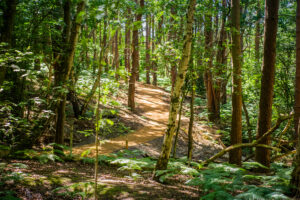We are excited to announce that we will soon begin archaeological investigations at two sites in Mindenhurst.
We will have a specialist team of archaeologists on site examining these areas, looking for items of archaeological and historical interest. It is essential to carry out this work before development takes place to ensure that we preserve and protect our cultural heritage.
It will be fascinating to see what they uncover since it will contribute to our collective understanding of the past and evidence how the area has changed over time.
Where will this take place?
Back in 2015, Cotswold Archaeology carried out a site wide archaeological survey, looking into the history of Deepcut and highlighting particular sites of interest. Based on their findings a programme of archaeological work was agreed and approved by the Surrey Heath Borough Council.
In their initial survey the archaeologists excavated test pits which helped identify areas that have archaeological potential and it is these areas that will be the focus of this archaeological investigation.
The plan below shows the two areas where these investigations will take place. Both areas are sites of future residential housing within the Mindenhurst Development and we are required to undertake this programme of work before the land is developed.
As you can see from the plan below, the archaeologists will carry out an extensive investigation by excavating trenches across the entirety of both sites. In preparation for this work, we therefore need to clear the site and remove trees. This will be done in line with our planning permission and we will be working with experienced ecologists from Surrey Wildlife Trust to ensure that all necessary measures have been taken to protect local wildlife.
What are they looking for?
It is hard to anticipate what might be found during investigations, however by understanding how Deepcut has evolved over time, this will provide us with a better idea.
The earliest recorded history dates back to the Roman era, when the area was part of the extensive road network connecting London to the south coast. However, there is no firm evidence that people lived in the area until post-medieval times (AD1500-1900).
In the 19th century the area was characterised by extensive open heathland and woods, with small clusters of housing and sporadic farmland. The British Army began to use the area of heathland around Chobham Common for training and exercises, however it wasn’t until 1900 when a semi-permanent camp of demountable buildings was built.
The extension of the Bisley Branch Railway Line through Deepcut to Blackdown in 1915 encouraged further expansion of the camp. During the two World Wars, Deepcut played a significant role and became a vital centre for military operations, housing allied forces from all over the world, and leaving a lasting impact on its landscape and community.
The historic interest of the site rests principally with its military history, so the archaeologists will be investigating these areas to see if any military training features might have survived in these areas.
How will they carry out their investigation?
A specialist archaeological contractor will carry out trail trenching at the locations shown on the previous plan. These trenches will be 30 metres in length and 1.8 metres wide and look similar to the example above. Initially the trenches will be excavated by a mechanical excavator, equipped with a toothless grading bucket, however work will continue by hand if they reveal archaeological features.
What will happen to their finds?
Hopefully some interesting finds will be unearthed during their investigation. If so, these artefacts will be assessed, photographed, and conserved in accordance with the appropriate museum guidelines. Arrangements will be made with the appropriate museum for the deposition of the site archive and the artefact collection.
We will be working closely with the archaeologists throughout their investigations and will share information as soon as we have it, via our Facebook page, website, and monthly newsletter.





